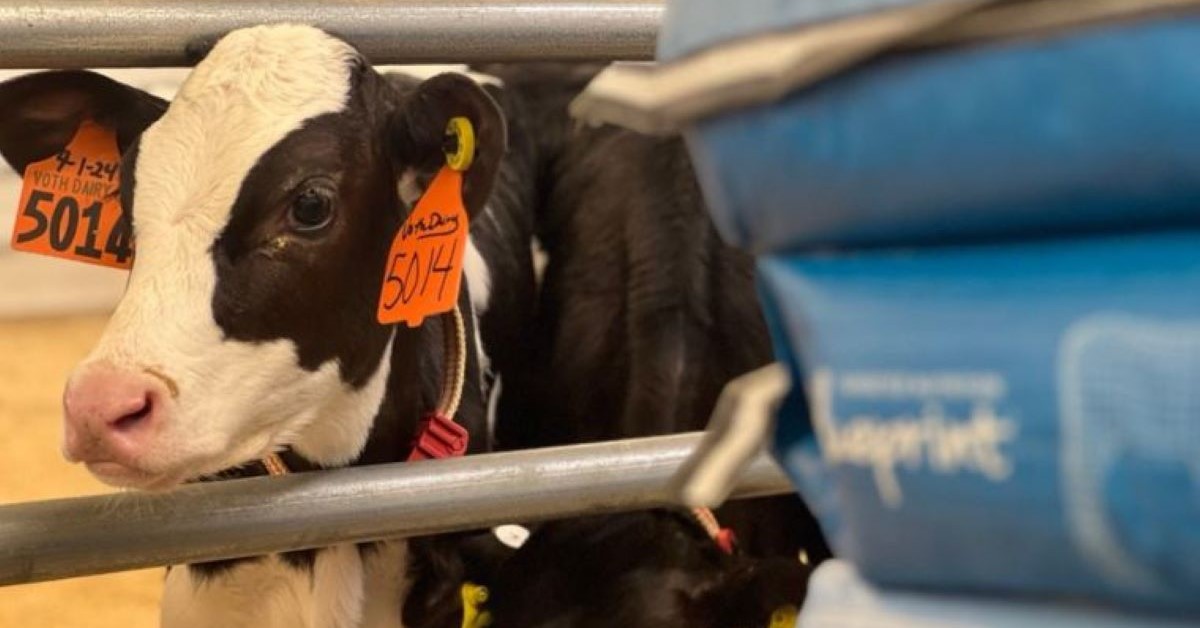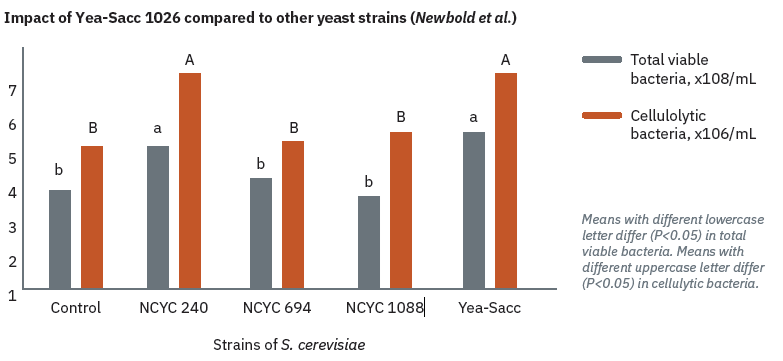
Enhancing rumen development and functions with yeast
As the primary site of microbial fermentation and digestion in developed dairy cattle, the rumen plays a critical role in both the well-being and the future production of individual cows, as well as the overall profitability of the dairy operation. With so much at stake, the strategic use of nutritional solutions in calfhood should be immediately implemented into our young calf programs to kickstart their healthy gut development and function. One such nutritional solution — a yeast culture developed from Saccharomyces cerevisiae — is commonly used as a probiotic in ruminant nutrition and has been proven to be effective in restoring the gut microbial balance, especially during digestive imbalances. Yeast has also been shown to stimulate the growth of cellulolytic fiber-digestive bacteria, which play a crucial role in developing the calf’s naïve rumen into a high-functioning, productive rumen.
When it comes to benefiting rumen development and fermentation capability, not all strains of yeast preparations are created equal. Yea-Sacc®, Alltech’s leading yeast specialty ingredient, was developed using a unique process designed to preserve the benefits of yeast and yeast metabolites — and it has been proven to do just that (Figure 1).

Supporting the lower GI Tract with Bacillus
While efficient and effective rumen function and development is crucial to overall animal health and performance, fostering a healthy and stable lower gastrointestinal (GI) tract is of the utmost importance in order to ensure efficient nutrient absorption and availability. The complex interactions of enzymes, nutrients and the gut environment can often hinder efficient nutrient uptake. Additionally, the lower GI tract presents an opportunity for undesirable pathogenic bacteria to establish a foothold — and, if given the opportunity, those pathogenic bacteria can lead to digestive disorders and compromised calf health.
In adult dairy cattle, potentially deadly challenges from hemorrhagic bowel syndrome, abdominal distention and mastitis can be mitigated by supplementing specific strains of Bacillus bacteria — specifically Bacillus licheniformis and Bacillus subtilis. In growing dairy calves, these same Bacillus organisms have been proven to target and inhibit proliferations of Clostridium perfringens in the hindgut (Figure 2.)

Impact of Clostridium in young dairy calves
Clostridium perfringens is a pathogen native to the GI tracts of calves, meaning it plays a natural role in normal and healthy hindgut functions. Unfortunately, an overgrowth of Clostridium can cause severe bloating and discomfort in calves and can result in death in a matter of hours. Clostridial bloating usually presents as a sudden attack, and impacted calves may also get diarrhea and mild depression and show signs of colic, including repeatedly kicking at their abdomens or lying flat in an attempt to relieve discomfort.
Several risk factors for clostridial bloat have been identified in young calves, including:
- Feeding milk replacer mixed at a high solids rate (> 14.5%) or an inconsistent solids rate
- Feeding large volumes of milk or milk replacer in a single feeding
- Inconsistent milk feeding times
- Inconsistent milk temperature
- Lack of water consumption
- Inadequate colostrum intake
- Cyclical grain intake
- Too many fines in starters, with inadequate fiber intake
- Diets high in fermentable starch
Young calves thrive on routine, so maintaining consistency and cleanliness is of the utmost importance to keep the threat of clostridial bloat at bay. Hubbard’s Blueprint Milk Replacer and Vitalizer Milk Replacer incorporate both Bacillus licheniformis and Bacillus subtilis strains to help combat the threat of clostridial blooms in the milk feeding phase, which can be highly detrimental to the overall success of a calf-rearing operation.
Combining the benefits of Yeast and Bacillus
Alltech recently launched a new Yea-Sacc 1026 BAC solution that combines the benefit of rumen-focused yeast and hindgut-focused Bacillus strains. By combining these two proven technologies, Yea-Sacc 1026 BAC offers head-to-tail support and coverage for the young dairy calf, keeping her on track while the entirety of her GI tract starts to develop and mature. Additionally, Hubbard Feeds’ newly reformulated Blueprint Elite Calf Starter and Blueprint Calf Starter Concentrate mixer pellet integrate Yea-Sacc 1026 BAC technology to help optimize rumen function, rumen development, calf health and overall calf performance. Work with your Hubbard Feeds representative to see how you can incorporate Yea-Sacc 1026 BAC into your calf starter program today.
References available upon request.
- Log in to post comments
